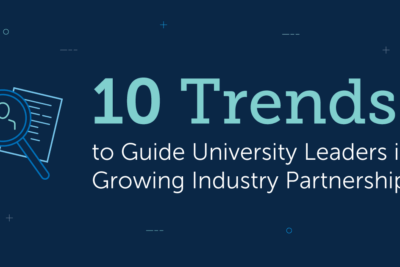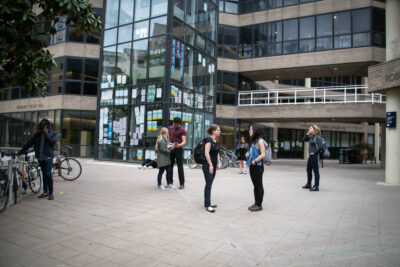Many universities have recently announced grand challenges initiatives, which are large university-wide efforts targeted at solving important real world problems, such as reducing homelessness or finding a cure to a disease. Earlier this fall, the University of Alabama at Birmingham (UAB) convened their first ever faculty and community workshop with the goal of a developing a grand challenge for their campus and city.
The UAB event brought together nearly 200 faculty and community members to exchange their grand challenge ideas, brainstorm more inclusive themes, and form potential working groups to submit proposals for $5 million in grand challenge seed funding from UAB over five years. The winning group will be expected to cultivate this seed and attract additional research funding to tackle their proposed challenge.
The workshop was highly engaging and EAB was honored to attend and present at the event—it also yielded three key insights in building such a workshop.
1. Work before you workshop
To participate in the workshop both community members and faculty participants had to submit an initial grand challenge concept paper, all of which are publicly available online. These concept papers included information about an important challenge to be solved, detailed plans for who would be involved in the project, and what other funding sources the teams could tap into. In all, UAB received 70+ concept papers.
The research office and their team then sorted the papers into larger thematic categories, including social equity in education, telemedicine, smart cities, and more. Through this sorting process, UAB created 10 distinct working groups that would collaborate at the two-day workshop. This process of paper submission and consolidation was crucial to the success of the workshop. Participants came to the event with a strong idea of the issues they wanted to address and were prepared to work together with like-minded partners to redesign and fine tune their ideas.
2. Let the ideas flow through interactive collaboration
The rest of the workshop combined concise presentations and group activities to distill the ideas of each working group into a unified thematic mission. These included team discussions, individual brainstorming of ideas and themes, and anonymous votes to rank the top idea in each working group.
Once each group selected their main idea, they added it to a giant note pad on the wall. Each group then discussed the “who, what, and when” of the potential project. The critical component for success was the full inclusion of each member at every step throughout the process. Thoughts and ideas were constantly being thrown out, considered, rebuilt, and incorporated into each of the larger themes. Participants also had the opportunity to review the ideas of other working groups, with some people shifting groups and multiple groups merging together.
3. Invite diverse attendees
The people at the workshop were another important factor that made the event engaging and productive for the attendees. The goal of the workshop was to bring together community members, faculty, and possible partners from industry as well as nonprofits who submitted concept papers for seed funding. Of the 200 participants, roughly 75% were faculty with the remaining 25% being engineers from industry, representatives from community groups and nonprofits, and students.
Many of the possible industry partners were connected to the event through masters degree students who found out about the workshop in their studies. This interesting mixture of professionals helped add dynamism to the conversations and provided a practical perspective.
One of the important features of the outside attendees was their interest in research and collaboration on more inclusive ideas. It worked well that these individuals weren’t necessarily actual funders, but instead be thought partners.
Promising outcomes for workshop attendees
UAB’s intensive two-day workshop was an overall success, resulting in 11 working groups that are well-positioned to submit strong grand challenge proposals. Participants were so excited about their work some even stayed late after the sessions on the first day and arrived early the second day to meet and discuss their work. It will be interesting to find out who the seed funding winner will be!
Demonstrate the impact of your grand challenge initiative
Since publishing our research brief on grand challenges, we’ve been asked how to select performance metrics and how to measure and communicate their progress. Our team has identified three broad categories of metrics to help you demonstrate the impact of your grand challenge initiative.
More Resources

10 trends to guide university leaders in growing industry partnerships

Communicate the Value of University Research to External Stakeholders
